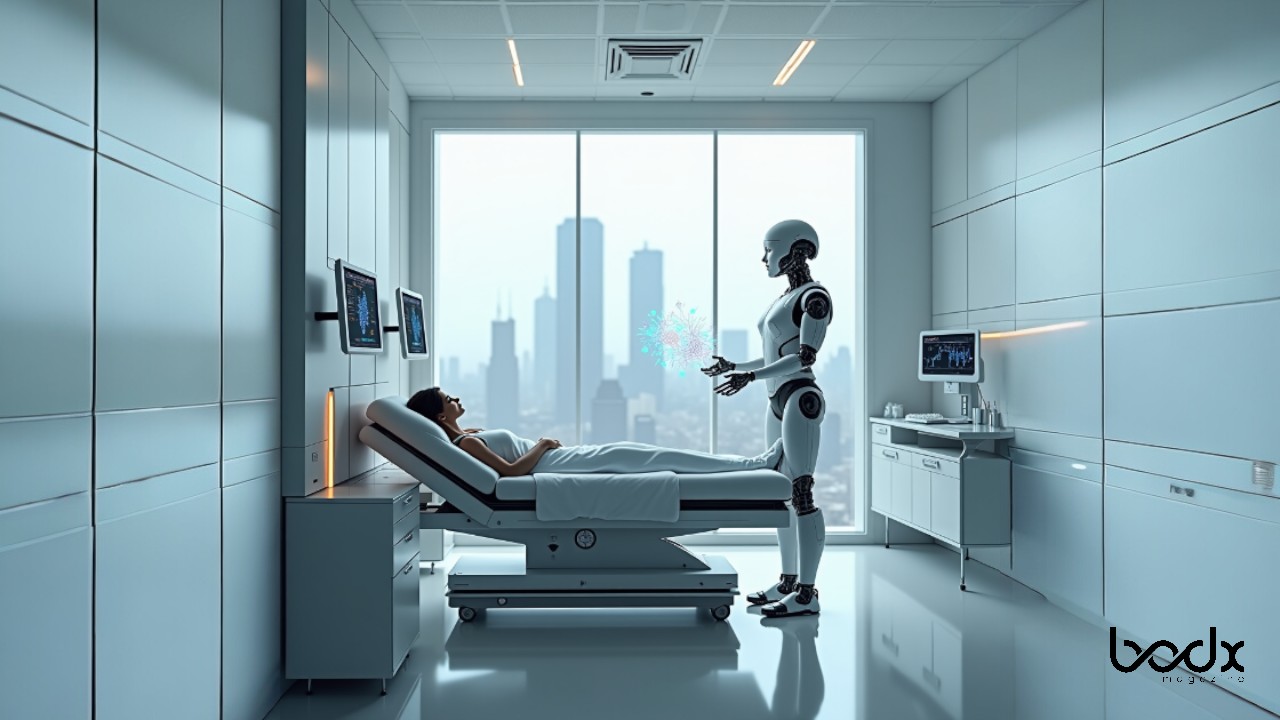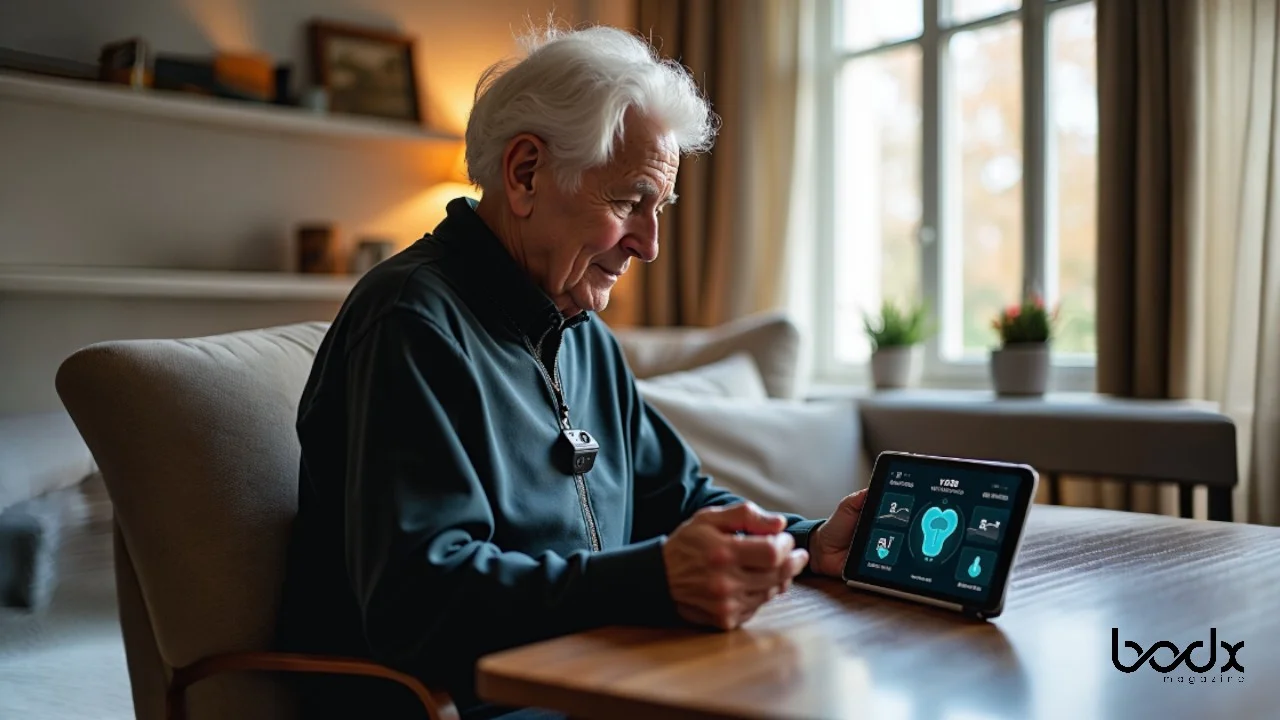The healthcare industry is on the brink of a revolution, with groundbreaking innovations poised to transform patient care, medical research, and health management. As we step into 2024, it’s crucial to stay informed about the latest advancements that promise to reshape the landscape of healthcare. In this article, we delve into the top healthcare innovations to watch in 2024, exploring their potential impact and the future they herald.
1. Artificial Intelligence and Machine Learning in Healthcare
1.1 Revolutionizing Diagnostics and Treatment
Artificial Intelligence (AI) and Machine Learning (ML) are at the forefront of healthcare innovation. These technologies are revolutionizing diagnostics and treatment by enabling more accurate and faster analysis of medical data. AI algorithms can analyze medical images, such as X-rays and MRIs, with remarkable precision, often surpassing human capabilities. This leads to earlier detection of diseases like cancer, significantly improving patient outcomes.
1.2 Personalized Medicine
AI and ML are also driving the shift towards personalized medicine. By analyzing a patient’s genetic makeup, lifestyle, and medical history, AI can recommend tailored treatment plans. This approach ensures that patients receive the most effective therapies with minimal side effects. For instance, AI can predict how a patient will respond to a particular medication, allowing doctors to make informed decisions.
1.3 Predictive Analytics for Preventive Care
Predictive analytics, powered by AI, is transforming preventive care. By analyzing vast amounts of data from electronic health records (EHRs), wearable devices, and other sources, AI can identify patterns and predict potential health issues before they become critical. This proactive approach enables healthcare providers to intervene early, reducing the risk of severe complications and improving overall health outcomes.
2. Telemedicine and Remote Patient Monitoring
2.1 Expanding Access to Healthcare
Telemedicine has gained significant traction, especially in the wake of the COVID-19 pandemic. It allows patients to consult with healthcare providers remotely, eliminating the need for in-person visits. This innovation is particularly beneficial for individuals in rural or underserved areas, where access to healthcare facilities may be limited. Telemedicine ensures that patients receive timely medical advice and treatment, regardless of their location.
2.2 Remote Patient Monitoring
Remote patient monitoring (RPM) is another game-changer in healthcare. With the help of wearable devices and IoT (Internet of Things) technology, patients can monitor their vital signs, such as heart rate, blood pressure, and glucose levels, from the comfort of their homes. This data is transmitted to healthcare providers in real-time, allowing for continuous monitoring and timely interventions. RPM is especially valuable for managing chronic conditions like diabetes and hypertension.
2.3 Enhancing Patient Engagement
Telemedicine and RPM also enhance patient engagement. Patients can actively participate in their healthcare by tracking their health metrics and communicating with their providers through digital platforms. This increased engagement leads to better adherence to treatment plans and improved health outcomes.
3. Genomics and Precision Medicine
3.1 Decoding the Human Genome
Genomics, the study of an individual’s genes and their functions, is revolutionizing healthcare. Advances in genomic sequencing technology have made it possible to decode the human genome quickly and affordably. This wealth of genetic information provides valuable insights into an individual’s susceptibility to diseases, enabling early detection and personalized treatment.
3.2 Precision Medicine
Precision medicine, also known as personalized medicine, leverages genomic data to tailor treatments to an individual’s unique genetic makeup. This approach is particularly promising in the field of oncology. By analyzing the genetic mutations driving a patient’s cancer, doctors can select targeted therapies that are more likely to be effective. Precision medicine is also being applied to other areas, such as cardiology and neurology, to develop customized treatment plans.
3.3 Gene Editing and CRISPR Technology
Gene editing technologies, such as CRISPR-Cas9, are pushing the boundaries of what is possible in healthcare. CRISPR allows scientists to precisely edit genes, potentially curing genetic disorders at their source. In 2024, we can expect further advancements in gene editing, with ongoing research exploring its applications in treating conditions like sickle cell anemia, cystic fibrosis, and muscular dystrophy.
4. Wearable Health Technology
4.1 Continuous Health Monitoring
Wearable health technology has come a long way, offering continuous health monitoring and real-time data collection. Devices like smartwatches, fitness trackers, and biosensors can track various health metrics, including heart rate, sleep patterns, physical activity, and even stress levels. This data empowers individuals to take control of their health and make informed lifestyle choices.
4.2 Early Detection of Health Issues
Wearable devices are not just for fitness enthusiasts; they play a crucial role in early detection of health issues. For example, some wearables can detect irregular heart rhythms, alerting users to potential cardiac problems. Others can monitor blood oxygen levels, providing early warnings of respiratory issues. These early detections enable timely medical interventions, potentially saving lives.
4.3 Integration with Healthcare Systems
The integration of wearable health technology with healthcare systems is another significant development. Data collected by wearables can be seamlessly shared with healthcare providers, allowing for more comprehensive and accurate patient records. This integration enhances the quality of care and enables healthcare professionals to make data-driven decisions.
5. Robotics and Automation in Healthcare
5.1 Surgical Robotics
Robotic-assisted surgery is transforming the field of surgery. Surgical robots, such as the da Vinci Surgical System, provide surgeons with enhanced precision, dexterity, and control. These robots can perform minimally invasive procedures with smaller incisions, reducing the risk of complications and speeding up recovery times. In 2024, we can expect further advancements in surgical robotics, making complex surgeries safer and more efficient.
5.2 Automation in Healthcare Facilities
Automation is also making its mark in healthcare facilities. From automated medication dispensing systems to robotic process automation (RPA) for administrative tasks, automation streamlines operations and reduces the burden on healthcare staff. This allows healthcare professionals to focus more on patient care and less on repetitive tasks.

5.3 AI-Powered Robotic Caregivers
AI-powered robotic caregivers are emerging as valuable assistants in elderly care and rehabilitation. These robots can assist with daily activities, provide companionship, and monitor the health of elderly patients. They can also remind patients to take their medications and perform exercises, promoting better adherence to treatment plans.
6. Advanced Medical Imaging Technologies
6.1 High-Resolution Imaging
Advancements in medical imaging technologies are enhancing the accuracy and clarity of diagnostic images. High-resolution imaging techniques, such as 7T MRI and advanced CT scans, provide detailed views of the body’s internal structures. These images enable healthcare providers to detect abnormalities with greater precision, leading to more accurate diagnoses and treatment plans.
6.2 Functional Imaging
Functional imaging techniques, such as functional MRI (fMRI) and positron emission tomography (PET), are providing insights into the brain’s activity and metabolic processes. These techniques are invaluable in diagnosing and monitoring neurological conditions, such as Alzheimer’s disease, epilepsy, and brain tumors. Functional imaging also plays a crucial role in research, helping scientists understand the underlying mechanisms of various diseases.
6.3 AI-Enhanced Imaging Analysis
AI is enhancing the analysis of medical images, making it faster and more accurate. AI algorithms can detect subtle changes in images that may be missed by human eyes. This capability is particularly valuable in radiology, where early detection of abnormalities can significantly impact patient outcomes. AI-enhanced imaging analysis is also being used in pathology to analyze tissue samples and identify cancerous cells.
7. Regenerative Medicine and Tissue Engineering
7.1 Stem Cell Therapy
Regenerative medicine, particularly stem cell therapy, holds immense promise for treating a wide range of conditions. Stem cells have the unique ability to differentiate into various cell types, making them ideal for repairing damaged tissues and organs. In 2024, we can expect further advancements in stem cell research, with ongoing clinical trials exploring their applications in treating conditions like spinal cord injuries, heart disease, and neurodegenerative disorders.
7.2 3D Bioprinting
3D bioprinting is another groundbreaking innovation in regenerative medicine. This technology allows scientists to create three-dimensional structures using bio-inks made from living cells. These structures can be used to create tissues and organs for transplantation. While still in its early stages, 3D bioprinting has the potential to address the shortage of donor organs and revolutionize the field of transplantation.
7.3 Tissue Engineering
Tissue engineering combines principles of biology, engineering, and materials science to create functional tissues and organs. Researchers are developing bioengineered tissues that can be used to replace damaged or diseased tissues in the body. This approach has the potential to treat a wide range of conditions, from skin injuries to organ failure.
8. Blockchain Technology in Healthcare
8.1 Securing Patient Data
Blockchain technology is making waves in healthcare by providing a secure and transparent way to manage patient data. Blockchain’s decentralized nature ensures that patient records are tamper-proof and can be accessed only by authorized individuals. This enhances data security and privacy, addressing one of the major concerns in healthcare.
8.2 Streamlining Clinical Trials
Blockchain is also streamlining the process of clinical trials. By providing a transparent and immutable record of trial data, blockchain ensures the integrity of clinical trial results. This technology can also improve patient recruitment and consent management, making clinical trials more efficient and reliable.
8.3 Enhancing Supply Chain Management
In the pharmaceutical industry, blockchain is enhancing supply chain management. By providing a transparent and traceable record of the entire supply chain, blockchain helps prevent counterfeit drugs from entering the market. This ensures that patients receive genuine and safe medications.
9. Nanotechnology in Medicine
9.1 Targeted Drug Delivery
Nanotechnology is revolutionizing drug delivery by enabling targeted and controlled release of medications. Nanoparticles can be engineered to deliver drugs directly to the site of disease, minimizing side effects and improving treatment efficacy. This approach is particularly promising in cancer treatment, where targeted drug delivery can enhance the effectiveness of chemotherapy while reducing its toxic effects.
9.2 Nanomedicine for Diagnostics
Nanomedicine is also making strides in diagnostics. Nanosensors can detect biomarkers of diseases at very low concentrations, enabling early diagnosis. These sensors can be integrated into wearable devices or used in point-of-care testing, providing rapid and accurate results.
9.3 Regenerative Nanomedicine
Nanotechnology is playing a role in regenerative medicine as well. Nanomaterials can be used to create scaffolds that support the growth and differentiation of stem cells, promoting tissue regeneration. This approach has the potential to treat a wide range of conditions, from bone fractures to heart disease.
10. Digital Therapeutics and Mobile Health Apps
10.1 Evidence-Based Digital Therapies
Digital therapeutics (DTx) are evidence-based interventions delivered through digital platforms, such as mobile apps and software programs. These therapies are designed to prevent, manage, or treat medical conditions. For example, digital therapeutics can help patients manage chronic conditions like diabetes and hypertension by providing personalized coaching and monitoring.
10.2 Mental Health Apps
Mobile health apps are playing a significant role in mental health care. These apps offer a range of services, from mindfulness and meditation exercises to cognitive-behavioral therapy (CBT) programs. They provide users with tools to manage stress, anxiety, and depression, making mental health care more accessible and convenient.
10.3 Chronic Disease Management
Mobile health apps are also transforming the management of chronic diseases. These apps allow patients to track their symptoms, medications, and lifestyle habits. They can also provide reminders for medication adherence and appointments. By empowering patients to take an active role in their health, mobile health apps improve disease management and outcomes.
Conclusion
The healthcare innovations of 2024 are set to revolutionize the industry, offering new ways to diagnose, treat, and manage health conditions. From AI and telemedicine to genomics and nanotechnology, these advancements promise to enhance patient care, improve outcomes, and make healthcare more accessible and efficient. As we move forward, staying informed about these innovations will be crucial for healthcare providers, patients, and stakeholders alike.
FAQs
1. What is the role of AI in healthcare?
AI is revolutionizing healthcare by improving diagnostics, personalizing treatment plans, and enabling predictive analytics for preventive care.
2. How does telemedicine benefit patients?
Telemedicine expands access to healthcare, allows for remote consultations, and enhances patient engagement through continuous monitoring and communication.
3. What is precision medicine?
Precision medicine tailors treatments to an individual’s genetic makeup, ensuring more effective therapies with fewer side effects.
4. How do wearable health devices work?
Wearable health devices monitor various health metrics in real-time, providing data that can be shared with healthcare providers for better health management.
5. What are the benefits of surgical robotics?
Surgical robotics offer enhanced precision, smaller incisions, reduced risk of complications, and faster recovery times for patients.
6. How does blockchain technology improve healthcare?
Blockchain secures patient data, streamlines clinical trials, and enhances supply chain management in the pharmaceutical industry.
7. What is nanotechnology’s role in medicine?
Nanotechnology enables targeted drug delivery, early diagnostics, and regenerative medicine through the use of nanoparticles and nanomaterials.
8. What are digital therapeutics?
Digital therapeutics are evidence-based interventions delivered through digital platforms to prevent, manage, or treat medical conditions.
9. How does 3D bioprinting work?
3D bioprinting creates three-dimensional structures using bio-inks made from living cells, potentially revolutionizing organ transplantation.
10. What is the future of regenerative medicine?
Regenerative medicine, including stem cell therapy and tissue engineering, holds promise for repairing damaged tissues and treating a wide range of conditions.
















